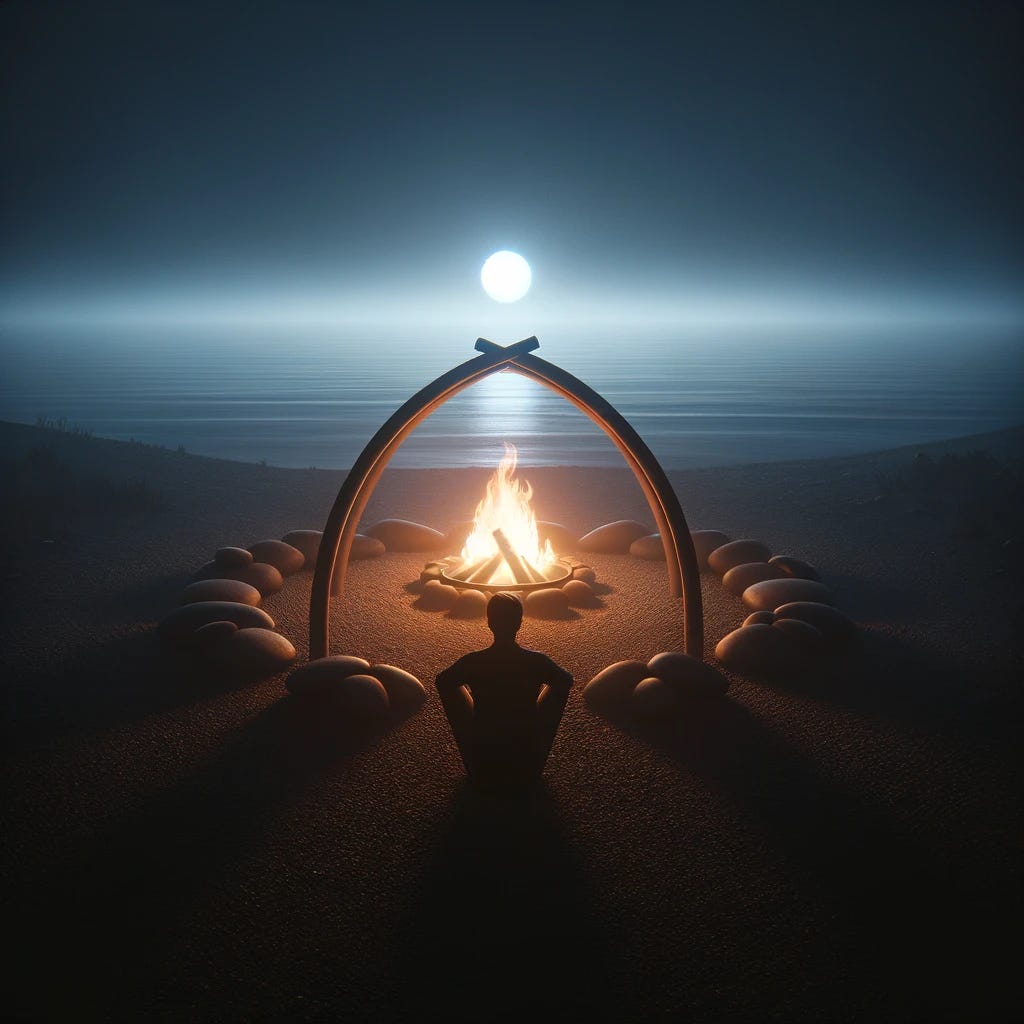Finding Fires in the Sacred Shadow
There is a healthy space between repression or denial and indulgence or excess. Some aspects of being human are not to be utterly tabooized or completely totemized, but rather to be explored.
By not being aware of having a shadow, you declare a part of your personality to be non-existent. Then it enters the kingdom of the non-existent, which swells up and takes on enormous proportions…If you get rid of qualities you don’t like by denying them, you become more and more unaware of what you are, you declare yourself more and more non-existent, and your devils will grow fatter and fatter. —Carl Jung
Imagine a circle of stones around a sacred fire. That mental image can symbolize the boundary between the sacred and the profane, as well as a way to explore the Shadow from outside of that circle—though not too far away.
Fire in shadow? The metaphor might seem a bit strained. But consider that your Shadow obscures fires that threaten to burn out of control, which is sometimes why people think it’s a good idea to repress them.
But why sacred fires? Jung calls them “devils” that grow fatter. I submit that one is bedeviled both by that which he denies and that in which he indulges to excess. Sacredness lies in moderation and boundedness, as in Aristotle’s Golden Mean or Buddha’s Middle Way.
The sacred fires in the Shadow can be revealed through psychoanalysis, careful practice, or creative endeavor. We must reveal them, we must respect them, and then, we must explore them without getting burned.
But we should never repress them.
The Shadow is misunderstood. It is neither the sole source of human sin nor a new-age excuse for Dionysian decadence. It is an integral part of our psyches and, therefore, our selves.
Socially speaking, draw boundaries with privacy or socially accepted revelry. Like the carnival celebrations before Lent (Mardi Gras) or the annual ephemera of Black Rock City, cultures worldwide find various ways to explore our shadows socially.
In many cultures, boys are subjected to scarification, involving hundreds of cuts on their bodies. Such gruesome rites are designed as initiation into manhood and take discipline to endure. Gruesome, yes. But isn’t a young man with scars a hell of a lot healthier than those soft, sheltered beings we call American youth—steeped as they are in victimhood Olympics or the advice to be more “vulnerable”?
The point of this is to acknowledge that, in America, we have a problem of both asceticism and excess, puritanism and prodigality. Some people join various churches or priesthoods in an effort to push down taboo proclivities, but they end up in shameful scandals. Others prance around naked with ball gags in their mouths—in front of children—because they think kink is an ‘identity’ that requires social acceptance. Your libido is part of your shadow. But it belongs in the bedroom, the underground, or the red-light district.
We can develop something like a practice diary or liturgical calendar to explore these shadow aspects in healthy ways. Therefore, I propose a monthly focus on different facets of our sacred fires, encouraging introspection and socially appropriate exploration throughout the year.
It can be fun. It can push boundaries. It might even leave a scar. But we must never walk away from the sacred fires, and we must never remove the stones.
The following calendar is for our paid subscribers. I hope you’ll upgrade today.
Keep reading with a 7-day free trial
Subscribe to Underthrow to keep reading this post and get 7 days of free access to the full post archives.



